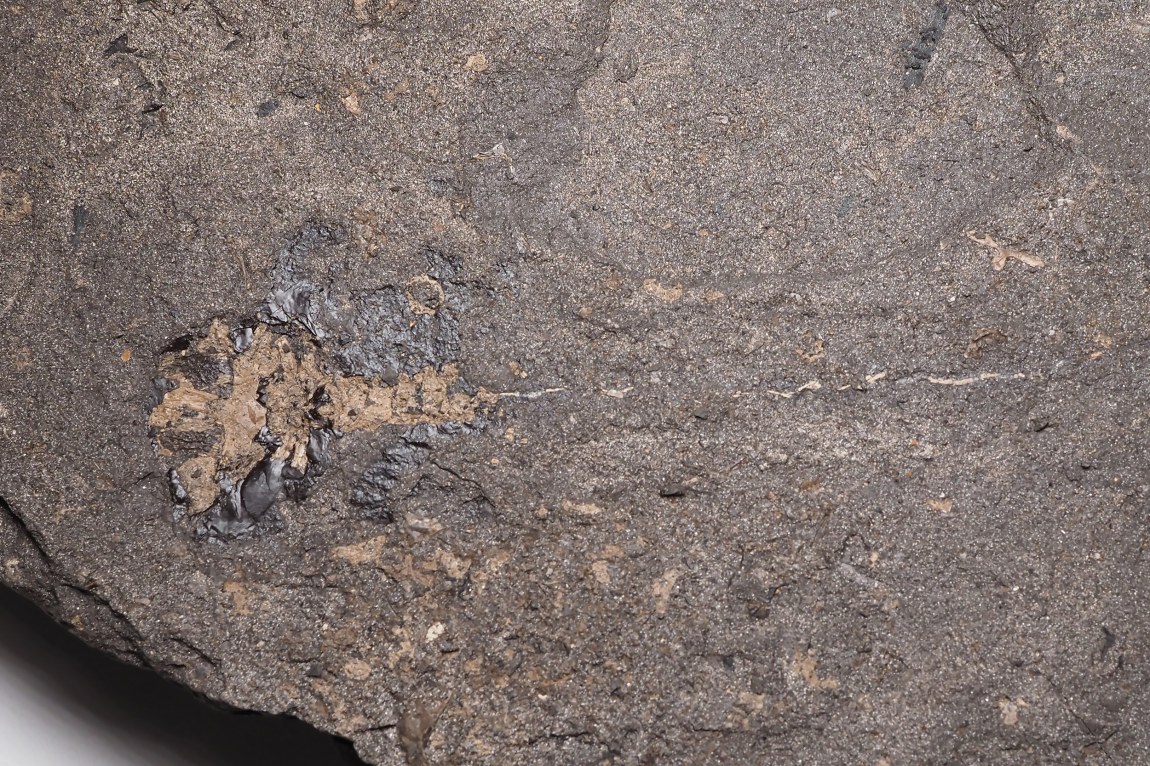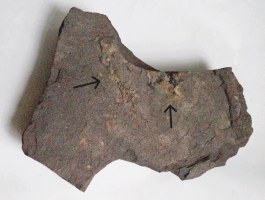Fossilized Tadpoles from the Nástup Mines in Tušimice
› Detail › Fossilized Tadpoles from the Nástup Mines in TušimiceExhibit of the Month 1/2025
In the area of the surface brown coal mines Nástup in Tušimice, several significant paleontological sites from the Tertiary period have been discovered over the past fifty years. As early as the 1950s, small bones of Tertiary animals and abundant fragments of mollusk shells were found in boreholes in the northern part of the Tušimice area. It was not until the progress of overburden removal in the area of the Merkur and Severní quarries that a unique site of European significance, later known as Ahníkov, was revealed. In the clay interlayers of the lower coal seam, remains of more than 150 species of animals from the period of the formation of coal-bearing swamps were discovered.
Other significant finds come from the so-called coal flakes. Above the main coal seam in the area of the Libouš and Merkur quarries, there is a 1 to 3 meter thick layer composed of dark brown, finely micaceous bituminous clays with yellow sideritic bands. A large part of these layers has already been removed. At one location in the Libouš quarry, a large quantity of needles belonging to the Engelhardt's pine species (Pinus engelhardtii) was found at the turn of the 1980s and 1990s. The needles grew in bundles of three and reached lengths of up to 35 centimeters. Along with them, large specimens of leaves from the plant species Comptonia difformis were often found.
Since 2014, fossil flora and fauna finds have been documented in the surface Libouš quarry at several locations. These layers are located near crandallit interlayers, which are a significant stratigraphic element. This allows for a relatively precise determination of the age of the layers with fossil finds ranging from 17,700,000 years to 17,000,000 years. This places these layers in the Libkovice layers. Until recently, the Libkovice and younger quarry layers in the Most basin were very poor to sterile in fossil flora and fauna finds. Since 2014, several locations of Libkovice layers have been documented in the Nástup Tušimice mines, in the Libouš II – Sever quarry. So far, 63 species of plants have been found in these layers, including 8 species of conifers and 55 species of angiosperms.
In addition to plant fossils, remains of fish, insects, and an unusually large number of dragonfly wings have also been found at the site.
A number of animal fossils have also been discovered in the flakes. The most common finds were individual skeletal remains of tadpoles, frogs, and fish. Very rarely, bones, teeth, or jaw parts of mammals were found. Unique finds included parts of fish, and exceptional finds included several whole fish specimens. Very abundant are the finds of skull bones of frog tadpoles. Less common were finds of parts or whole individuals of tadpoles.
In 2024, a site with extraordinary samples of tadpole fossils was discovered in the layers of flakes. In an area of about 3x3 meters, approximately 15 specimens of tadpoles were found. Most of them preserved the tail part of the skeleton as well. This is very rare at this location. In the past 20 years of research, only one similar specimen has been found. The regional museum and gallery acquired two samples from this find. The first sample is a slab measuring 22x25 cm, on which there are two tadpoles, one of which (Fig. 1) is 13 cm long (body 5 cm, tail 8 cm) and the other is 12 cm long (body 5 cm, tail 7 cm). The second slab (Fig. 2) measures 15x29 cm. This slab also contains two tadpoles, but only the bodies without tails. Their lengths are 6 and 8 cm.
Text: Pavel Dvořák
Photo: Pavel Krásenský




